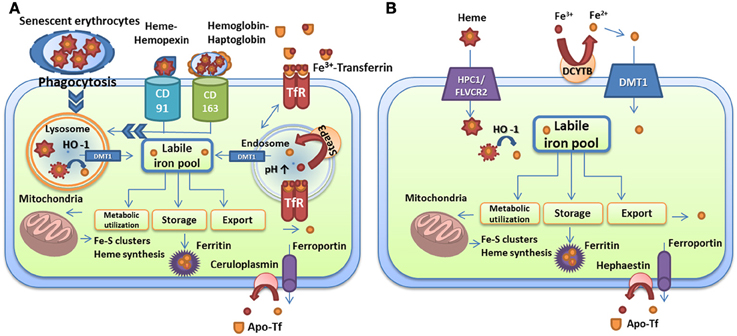(LF), also known as lactotransferrin (LTF), is a multifunctional protein of the transferrin family. Lactoferrin is a globular glycoprotein with a molecular mass of about 80 kDa that is widely represented in various secretory fluids, such as milk, saliva, tears, and nasal secretions. Lactoferrin is also present in secondary granules of PMN and is secreted by some acinar cells. Lactoferrin can be purified from milk or produced recombinantly. Human colostrum ("first milk") has the highest concentration, followed by human milk, then cow milk (150 mg/L).
Referring to cystic fibrosis
The human lung and saliva contain a wide range of antimicrobial compound including lactoperoxidase system, producing hypothiocyanite and lactoferrin, with hypothiocyanite missing in cystic fibrosis patients. Lactoferrin, a component of innate immunity, prevents bacterial biofilm development. The loss of microbicidal activity and increased formation of biofilm due to decreased lactoferrin activity is observed in patients with cystic fibrosis.These findings demonstrate the important role of lactoferrin in human host defense and especially in lung.
Lactoferrin with hypothiocyanite has been granted orphan drug status by the EMEA and the FDA. Wikipedia

A study affirms:
In cystic fibrosis (CF) high iron concentration in airway secretion plays a main role in bacterial multiplication and biofilm formation as well as in inflammatory response. Burkholderia cenocepacia, an opportunistic facultative pathogen responsible for chronic lung infections and cepacia syndrome, recurrently infects CF patients. Lactoferrin (Lf), an iron binding multifunctional glycoprotein synthesized by exocrine glands and neutrophils, has been found at higher concentration in the airway secretions of infected CF patients than in healthy subjects. bLf did not significantly affect invasion efficacy by biofilmforming B. cenocepacia clinical strains. Conversely, the addition of bLf to cell monolayers during infection significantly decreased the pro-inflammatory Interleukin (IL)-1beta and increased the anti-inflammatory IL-11 expression compared to that observed in cells infected in the absence of bLf. The bLf ability to modulate genes expressed following B. cenocepacia infection seems related to its localization to the nucleus of infected IB3-1 cells. These results provide evidence for a role of bLf in the protection of infected CF cells from inflammation-related damage, thus extending the therapeutic potential of this multifunctional natural protein. Lactoferrin decreases inflammatory response by cystic fibrosis bronchial cells invaded with Burkholderia cenocepacia iron-modulated biofilm, 2011

A second study asserts:
Antimicrobial proteins are important in lung defense and are potential therapeutic agents in chronic airways infection such as cystic fibrosis (CF). In preparation for future clinical studies, we sought to determine levels of three antimicrobial proteins [lactoferrin, lysozyme, and secretory leukoprotease inhibitor (SLPI)] in the CF airway and to examine the relationships between these antimicrobial proteins and airway inflammation and infection. We examined bronchoalveolar lavage fluid (BALF) from 45 individuals with CF and 23 disease control individuals. Airway inflammation was measured through BALF neutrophil counts and neutrophil elastase activity. Infection was assessed through quantitative counts of CF-related bacterial pathogens. BALF lysozyme activity and lactoferrin levels were elevated in individuals with CF compared to controls whereas SLPI levels were not different between the groups. Among the CF subjects, lysozyme activity and lactoferrin increased with age while SLPI decreased with age. Lysozyme activity and lactoferrin concentrations correlated positively with neutrophil counts but not with bacterial colony counts. SLPI levels were inversely related to both neutrophil counts and bacterial colony counts. This study provides information concerning the levels of antimicrobial proteins present in the CF airway that are relevant to future clinical trials of these compounds and demonstrates clear relationships between antimicrobial protein-specific levels and airway inflammation and infection.
Relationship between antimicrobial proteins and airway inflammation and infection in cystic fibrosis, 2009
Related to this:
Another study states: Plasma lactoferrin concentrations were measured in blood of cystic fibrosis patients, heterozygotes and controls using a specific and sensitive enzyme immunoassay. 67 plasmas were studied (26 controls, 23 heterozygotes, 18 cystic fibrosis patients) and the results showed a statistically significant increase (p less than 0.05) of the level of plasma lactoferrin in cystic fibrosis patients (265 +/- 224 micrograms/l) compared to controls (168 +/- 100 micrograms/l) and heterozygotes (150 +/- 72 micrograms/l). Since it is well established that plasma lactoferrin level could be influenced by the number of neutrophils.
A second set of experiments was performed on 20 cystic fibrosis patients on whom leukocyte counts were also made. When the 15 plasmas with normal neutrophils (in the range 2 to 6 giga/l) were considered, the mean lactoferrin level was 318 +/- 116 micrograms/l, still far above the normal values. For serum, a similar significant increase of lactoferrin concentration was observed in 33 cystic fibrosis patients (610 +/- 551 micrograms/l) compared to the values observed for 25 controls (237 +/- 155 micrograms/l) and 37 heterozygotes (272 +/- 231 micrograms/l). Cystic fibrosis protein (CFP) was identified in the same sera by isoelectric focusing and the intensity of the band was closely related to the increase of lactoferrin concentration in cystic fibrosis patients. In contrast, no difference in serum lactoferrin concentrations was observed between heterozygotes with or without CFP, indicating that the increased CFP concentration cannot be due only to altered granulocyte function.
Plasma and serum lactoferrin levels in cystic fibrosis. Relationship with the presence of cystic fibrosis protein, 1989
Conclusion:
Studies conducted in vitro have shown that lactoferrin can actually prevent the formation of biofilm through the action of chelating of iron.
Regarding the prospects for future investigation, we can assume two possible routes of administration of lactoferrin: aerosol, in order to increase the local concentration of the protein and prevent the formation of bacterial biofilms, or orally.
Andrea Battistoni, Piera Valenti, Francesca Berlutti Dipartimento di Biologia, Università di Tor Vergata, Roma 2008